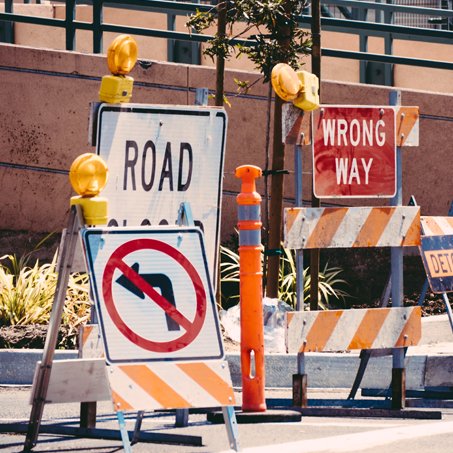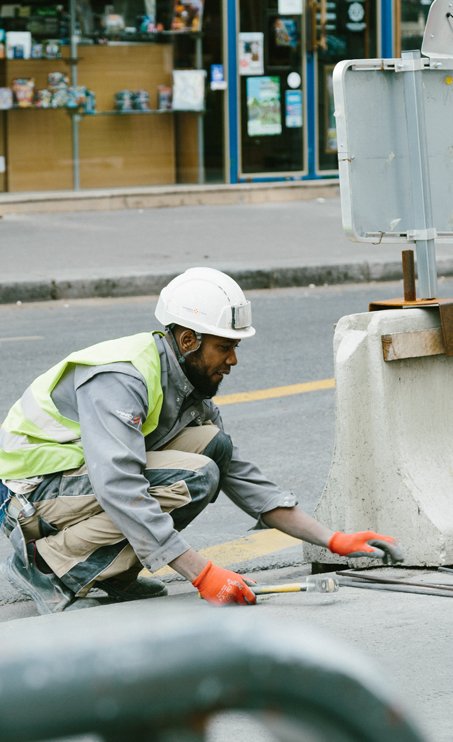Fires can escalate to dangerous levels in a matter of seconds. In fact, according to the latest data from the National Fire Protection Association, Fire departments responded to 1.34 million fires in 2022 alone. With an average of one home fire every 86 seconds, having the right fire extinguisher readily available can be the critical difference between contained damage and a devastating loss.
Of all the fire extinguisher types, CO2 (carbon dioxide) models stand out for their versatility and quick suppression power on common combustible fires. With their lack of clean-up and low toxicity, CO2 fire extinguishers are a smart addition to any commercial or residential emergency preparation kit.
In this ultimate guide, you’ll learn everything you need to know about CO2 extinguishers – from buying to proper use. With the right knowledge, you can utilize these portable devices to swiftly neutralize fires and protect lives and property.
Understanding CO2 Fire Extinguishers
CO2 fire extinguishers are highly effective options for suppressing Class B fires from flammable liquids and Class C fires from electrical equipment. The carbon dioxide released displaces oxygen and cools the fire to stop combustion.
These extinguishers are ideal for IT rooms, labs, kitchens, workshops, vehicles, and other settings prone to electrical or cooking oil/grease fires. Their non-conductive, non-residue discharge makes them safe for electronics.
CO2 extinguishers come in compact 2 kg, 3 kg, and 4.5 kg sizes that can be wall-mounted for quick access. Their pressurized discharge allows remote firefighting from a safe distance.
The versatility of Class B and C fires makes CO2 extinguishers an essential fire protection tool for commercial and industrial facilities. Their portability and ease of use make them a top choice.
What Are CO2 Fire Extinguishers?
CO2 fire extinguishers work by displacing oxygen, a key element of the fire triangle. The extinguishers contain liquid carbon dioxide under high pressure. When deployed, the liquid CO2 converts to a gas and expands rapidly, cooling the surrounding air. This expands into a large volume of gas that is heavier than air and displaces oxygen from the area, removing one side of the fire triangle and extinguishing the flames. The cold temperature of the CO2 vapor also helps absorb heat from the fire.
Inside the cylinder is a siphon tube that allows the liquefied gas to exit as vapor through the discharge hose. The lever-operated valve piercing pin punctures the seal on the gas cylinder when pressed and allows the CO2 to expand out the nozzle. CO2 extinguishers are highly effective at putting out Class B fires involving flammable liquids and Class C fires involving electrical equipment. However, they should not be used on Class A fires involving ordinary combustibles like wood, cloth, and paper which require a quenching effect to extinguish flames.
It’s also important to be aware of the potential oxygen depletion hazard in an enclosed space if large volumes of CO2 are released. Ventilation should be provided immediately after deploying a CO2 extinguisher in a confined area.
How CO2 Fire Extinguishers Work
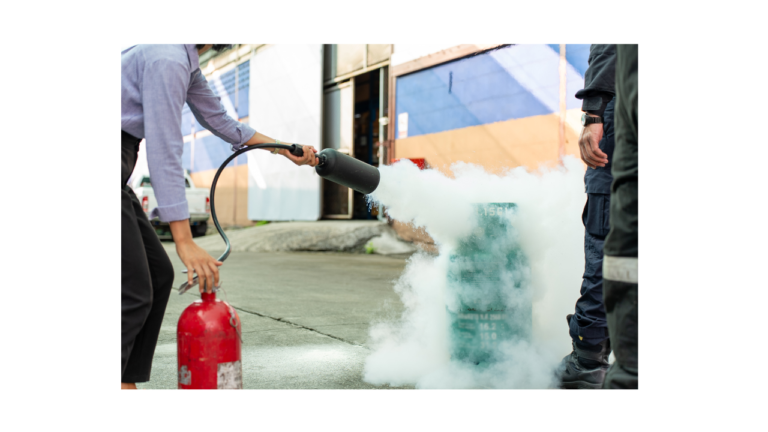
CO2 fire extinguishers utilize the chemical properties of carbon dioxide gas to suppress fires. Here is an overview of the mechanism:
- The extinguisher contains liquefied CO2 sealed in a pressurized cylinder. The pressure is around 850 psi.
- When the lever is pressed, a puncture pin pierces the seal on the cylinder.
- This allows the liquid CO2 to expand into a gas and rush out the nozzle.
- As it expands, the carbon dioxide undergoes a dramatic drop in temperature. It cools from around -20°F in liquid form to -110°F as an expanding gas.
- This discharged CO2 vapor cools the fuel surfaces of the fire as well as displaces oxygen in the surrounding area. Since fire needs heat and oxygen to burn, this extinguishes the flames.
- The large volume of discharging gas also helps interrupt the chemical chain reaction of combustion.
- The pressurized discharge allows the operator to stand back 6-8 feet from the fire while maintaining an effective suppressing agent stream.
- The carbon dioxide disperses quickly into the air after discharge and leaves no residue behind. This makes it ideal for electronics and delicate equipment.
So in summary, CO2 extinguishers rapidly cool fires while displacing oxygen to swiftly suppress flames with a clean and mess-free mechanism.
CO2 Fire Extinguisher Types and Classifications
Fire extinguishers are classified by the types of fires they are designed to fight. CO2 extinguishers are primarily used on Class B and C fires:
- Class B fires involve flammable liquids like gasoline, oil, grease, paint, etc. The CO2 vapor smothers the fire by displacing oxygen. It also cools the fuel below its ignition temperature.
- Class C fires involve energized electrical equipment like wiring, controls, motors, and appliances. The non-conductive CO2 agent puts out the fire without risk of electric shock.
CO2 extinguishers can also be used on Class A fires involving ordinary combustibles like wood, paper, cloth, trash, plastics, etc. However, other agents like water are typically more effective. The CO2 blast can help suppress the flames but does not cool the fuel or soak it to prevent re-ignition.
There are different classifications of CO2 extinguishers:
- Class B extinguishers contain only carbon dioxide agents. They range from 2-100 lbs capacity.
- Class BC extinguishers have a small percentage of dry chemicals added to make them more effective on a wider range of fire classes.
- Wheeled models hold larger CO2 volumes (50-100 lbs) for commercial and industrial fire suppression needs.
So while CO2 extinguishers are not equally effective on all types of fires, their ability to quickly put out flammable liquid and electrical fires makes them a versatile choice for both commercial and home use.
What are the Components and Features Of CO2 Fire Extinguishers
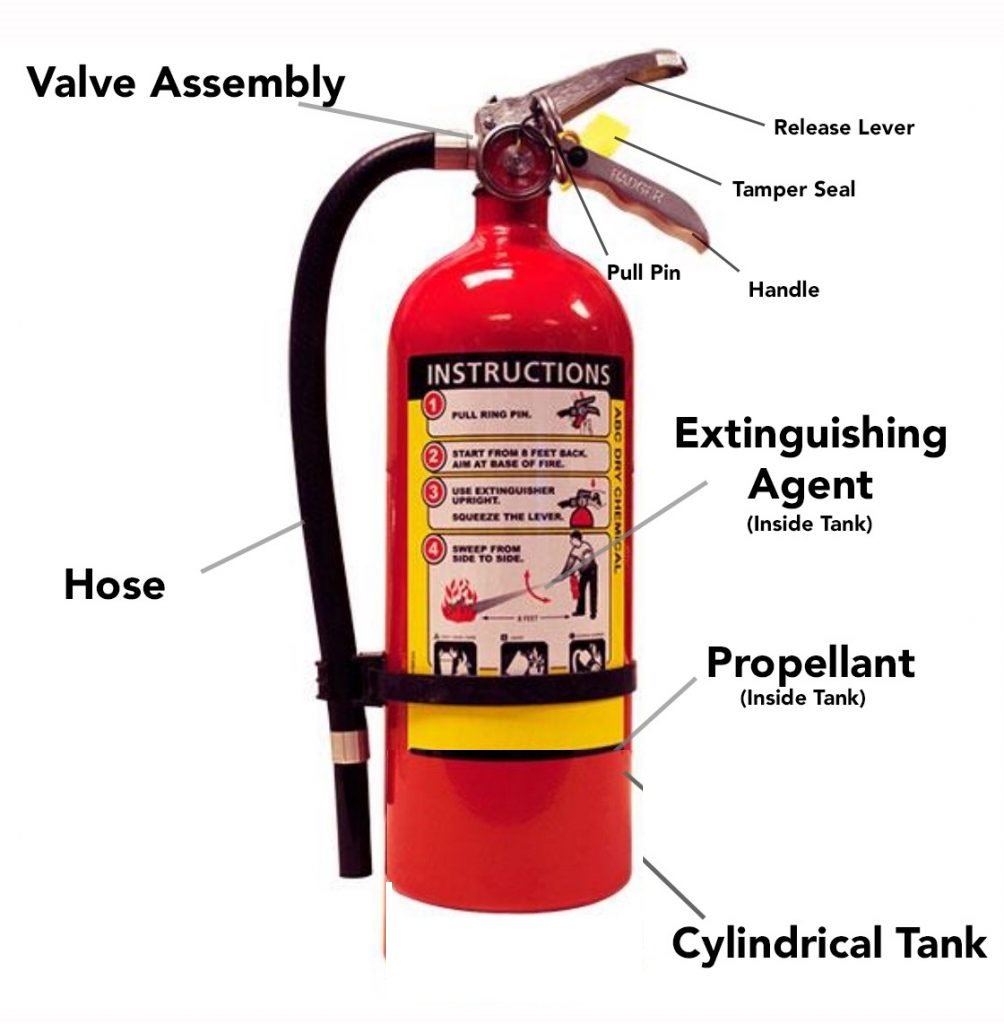
CO2 fire extinguishers consist of the following key components and features:
- Cylinder – This is a steel or aluminum tank that contains the liquid CO2 under high pressure of 850-1200 psi. Common sizes are 2kg, 5lb, 10lb, 15lb.
- Valve assembly – Includes a safety pin, valve handle, pressure gauge, and discharge lever. The lever pierces a seal to release the pressurized gas.
- Discharge hose – A flexible hose made of stainless steel or synthetic rubber to dispense the CO2. Has a short range of 3-8 feet.
- Carrying handle – Top-mounted handle makes the units portable for quick deployment.
- Pressure gauge – Displays the pressure level inside the tank to indicate readiness for use.
- Nozzle – The brass, plastic, or aluminum nozzle directs the discharge in a wide, floating pattern to blanket the fire.
- Mounting bracket – Allows secure wall or vehicle installation for easy accessibility.
- Safety pin – Prevents accidental discharge until ready to use.
These components allow CO2 extinguishers to safely deliver a cold, pressurized blast of CO2 gas to suppress fires from a close distance while remaining portable. Proper handling and maintenance help ensure readiness.
Pros and Cons of CO2 Fire Extinguishers:
Pros
- Highly effective at extinguishing Class B flammable liquid and Class C electrical fires
- Leaves no residue, minimizing damage to equipment
- Can be discharged from a safe distance due to a pressurized stream
- Compact and portable
- Simple to operate and maintain
- CO2 dissipates quickly without reducing oxygen long-term
Cons
- Limited effectiveness on Class A fires involving ordinary combustibles
- Potential oxygen depletion hazard in confined spaces
- Loud discharge noise may startle untrained users
- Short discharge range limits reach
- Discharged gas can temporarily obscure visibility
- CO2 vapor can cause frostbite if used incorrectly
- Cylinders require regular hydrostatic testing
In summary, CO2 extinguishers are ideal for putting out flammable liquid and electrical fires quickly and cleanly, but have limitations including short range and lack of cooling effect on solid combustibles. Proper training and awareness of the cons are key to safe and effective use.
Different Sizes and Capacities of CO2 Fire Extinguishers
CO2 fire extinguishers come in a range of sizes to suit different fire suppression needs:
- 2 kg – Compact and portable extinguishers ideal for light risks like offices, vehicles, and homes. Approximately 1 minute discharge time.
- 5 lb (2.3 kg) – Slightly larger capacity for light commercial and industrial uses. 1-1.5 minute discharge.
- 9 kg – A common portable extinguisher size, providing 2-3 minutes of discharge time. Suitable for most general risks.
- 10 lb (4.5 kg) – This popular versatile model, is ideal for vehicles, workshops, labs, and mechanic bays.
- 15 lb (6.8 kg) – Intermediate size with 3-4 minute discharge time. Used in restaurants, service garages, and industrial settings.
- 20 lb (9 kg) – Extended discharge time of 4-5 minutes. For moderate fire risks in offices, warehouses, and vehicles.
Larger wheeled units from 50-100 lb capacity are also available for specialized suppression needs. The 9 kg or 20 lb size offers a nice balance of compact portability with sufficient firefighting capacity for moderate-risk areas. Two bottles can be deployed for additional suppression time. It’s best to consult safety codes and conduct a risk assessment to determine the right extinguisher size.
How To Use Techniques Of Co2 Fire Extinguisher
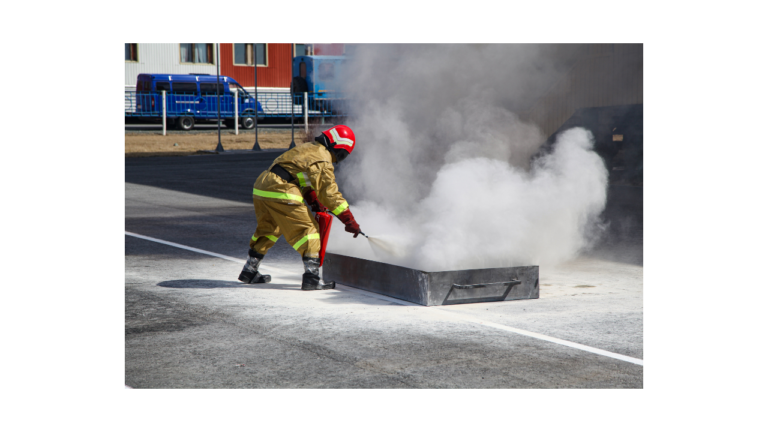
The PASS technique provides a simple and effective process for operating a CO2 fire extinguisher:
- Pull – Pull the safety pin from the handle. This will allow you to discharge the extinguisher.
- Aim – Aim the nozzle toward the base of the fire. Get within 6-8 feet before discharging.
- Squeeze – Squeeze the lever slowly to discharge the CO2. This will release the pressurized agent.
- Sweep – Sweep the nozzle from side to side at the base of the fire. Move closer as the fire is extinguished but be cautious of reignition.
Remember to hold the extinguisher upright to ensure proper discharge. Test fire the extinguisher briefly to get a feel for the discharge range and velocity.
Aim for the fuel source or hottest part of the fire instead of the flames. Turn the lever to stop the discharge once the fire is out to conserve the agent. Back away once the fire is extinguished as reignition is possible. Always have an evacuation route planned in case the fire cannot be controlled. The PASS method helps ensure CO2 extinguishers are used properly so fires can be suppressed quickly and safely.
When To Use A CO2 Fire Extinguisher
Before deciding to use any fire extinguisher, it is crucial to assess the situation. Only proceed if the fire is limited in size and you have a clear escape route. Evacuate immediately if the fire grows beyond your capability to suppress it.
CO2 extinguishers excel at suppressing smaller Class B flammable liquid and Class C electrical fires. Examples include grease fires in a kitchen, gasoline/oil fires in a garage, burning electrical appliances or outlets, and energized electrical panels or equipment. A CO2 extinguisher can quickly put out such fires before they have a chance to grow.
However, use extreme caution before deploying a CO2 extinguisher in an enclosed space as it rapidly displaces oxygen. Open doors and windows to ventilate before use and evacuate afterward. Also, avoid using CO2 models on sensitive equipment like airplane controls without proper training.
For larger Class A fires involving combustible solids like wood, paper, and textiles, a water or multi-purpose dry chemical extinguisher is likely the safer choice. CO2 has a limited ability to penetrate and cool these types of fires.
In summary, CO2 extinguishers are ideal for early suppression of emerging Class B and C fires but require proper situational awareness by the operator. Assess, sound the alarm, and evacuate if the fire grows too large to easily extinguish.
Ladwa CO2 Fire Extinguishers - Product Showcase
For over 25 years, Ladwa has been manufacturing high-quality fire protection equipment and extinguishers in India. They are committed to fire safety and make continuous investments in technology, quality control, and testing to produce world-class products.
Ladwa offers a complete range of CO2 extinguishers to meet any fire protection need:
- 2 kg and 3 kg portable extinguishers – Compact and lightweight units perfect for vehicles, homes, offices
- 4.5 kg and 5 kg models – Ideal general-purpose extinguishers for factories, garages, laboratories
- 10 kg industrial units – Extended discharge time for moderate risks in warehouses, institutions
- 22.5 kg trolley units – Larger capacity on wheels for commercial and industrial settings
All Ladwa CO2 extinguishers are ISI-approved and undergo stringent quality tests. They comply with ISO 9001 standards and use food-grade CO2 charges. The seamless cylinders have durable coatings to prevent corrosion.
So for a quality CO2 fire extinguisher made in India, look no further than Ladwa. Their full range provides options for any fire risk, backed by their decades of manufacturing expertise and service.
Co2 Fire Extinguishers
- Specialized Electrical Fire Protection: Tailored for Class B and electrical fires, providing essential defense for critical environments such as data centers, laboratories, and offices with sensitive electronic equipment.
- Extended Suppression Capacity: With a substantial 9KG and 4.5KG capacity fire cylinder, this extinguisher ensures a prolonged discharge of CO2, delivering comprehensive and effective fire suppression in large and high-risk areas.
- Clean and Non-Corrosive: CO2 leaves no residue, offering a clean and non-corrosive fire suppression solution, critical for protecting valuable electronic equipment without causing damage.
- Swift and Precise Activation: Equipped with an accessible pull-pin mechanism and a clear pressure gauge, enabling quick and precise activation during urgent situations.
- Built for Durability: Crafted from high-quality materials, the 9KG and 4.5KG CO2 Fire Extinguisher is built to endure challenging environments, providing a reliable and durable fire safety solution.
Where To Buy Ladwa CO2 Fire Extinguishers?
Here are some tips on where to buy Ladwa CO2 fire extinguishers:
- Ladwa has a wide network of authorized dealers across India. Contact your nearest dealer to purchase Ladwa fire extinguishers and refilling services.
- Major e-commerce platforms like Amazon, and Flipkart offer a range of Ladwa fire safety products. Compare models and prices before ordering online.
- Ladwa’s website has a store locator to find your closest dealer. You can also call their toll-free customer care number for purchase support.
- For bulk orders, Ladwa offers customized fire solutions for offices, institutions, and facilities. Contact their sales team directly to place bulk orders.
Purchase only from authorized dealers to ensure genuine Ladwa products with valid warranty support. Check for the latest ISI certification and product manuals.
Benefits of Ladwa CO2 Fire Extinguishers
Minimal Residue – The pure CO2 agent leaves no messy residue behind after discharge. This makes it ideal for sensitive electronics and equipment.
Electrical Equipment Safety – The non-conductive CO2 vapor safely extinguishes fires in electrical equipment without risk of electric shock.
Environmental Impact – CO2 is a naturally occurring gas that does not deplete ozone or emit harmful byproducts—an eco-friendly extinguishing agent.
Portable and Easy to Use – Compact and lightweight cylinders are easy to deploy. Simple operation and lack of clean-up reduce hassle.
Peace of Mind – Having a Ladwa CO2 extinguisher nearby assures that small fires can be quickly suppressed without damage. Critical for facilities housing valuables.
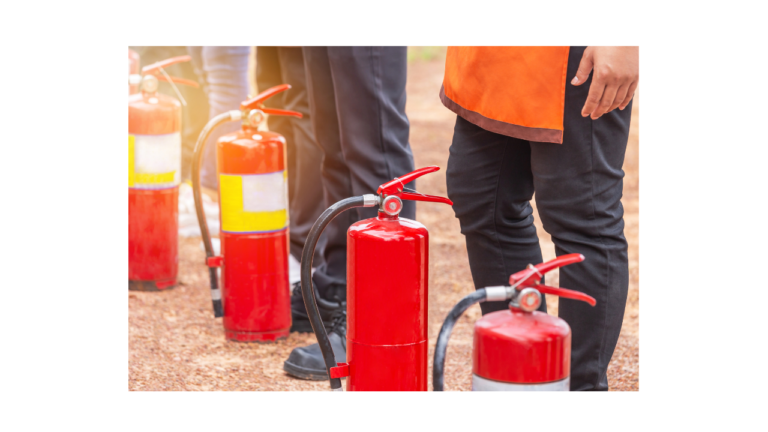
Proper Maintenance and Inspection of Co2 Fire Extinguisher
Some tips for properly maintaining and inspecting a CO2 fire extinguisher:
Regular Inspection Procedures
CO2 extinguishers should be visually inspected monthly. Check that the pressure gauge reads in the operable range. Verify that the safety pin and tamper seal are intact. Look for any obvious physical damage or obstructions. Weigh the unit and compare it to the manufacturer’s specifications to ensure the CO2 charge is at the proper fill level.
Recharging and Refilling
CO2 extinguishers need to be recharged if they are discharged even partially. Completely discharged cylinders must be hydrostatically tested before fire cylinder refilling. Partial discharges can simply be topped off. Use only licensed professionals like Ladwa for recharging, as the pressurized CO2 can be dangerous if handled improperly.
The large CO2 cylinders should be hydrostatically tested every 5 years to verify tank integrity. The smaller CO2 cylinders need hydro-testing every 12 years.
Follow the manufacturer’s maintenance guidelines. Replace parts like hoses, nozzles, and gauges when needed. Proper care ensures your CO2 extinguisher will be ready for use.
Buying Guide Of Co2 Fire Extinguisher
Cost
CO2 extinguishers are competitively priced against other extinguisher types. Bulk rates are lower per unit.
Value for Money
While more expensive than dry chemical extinguishers upfront, the lack of clean-up and maintenance provides great long-term value. No refilling or additional purchases are needed after discharge – just recharge the CO2.
Where to Buy
Purchase from reputable brands like Ladwa that are ISI-certified. Ladwa CO2 extinguishers offer quality fire protection at reasonable prices. Buying from ladwa.com ensures manufacturer direct pricing.
What to Look For
Always check for valid BIS certification and manufacturer warranty of 1-3 years. Confirm the CO2 cylinder is sized appropriately for your space and fire risk. Larger capacities provide longer discharge times.
Investing in a quality CO2 extinguisher from a trusted brand delivers peace of mind knowing you are prepared to handle fire emergencies.
Conclusion
Having the right fire extinguisher readily available can mean the difference between minor and major damage should a fire emergency occur. As discussed in this guide, CO2 extinguishers offer a versatile suppression solution for commercial and residential needs.
CO2 models are proven performers when it comes to extinguishing flammable liquid and electrical fires quickly and cleanly. Their compact size, ease of use, and minimal maintenance make them a smart addition to any fire safety kit. With proper handling and awareness of limitations, CO2 extinguishers can protect lives and property.
Ladwa offers a wide range of quality CO2 fire extinguishers to suit any application. Their ISI-certified products provide reliable and lasting performance you can count on. To purchase Ladwa CO2 fire extinguishers online, visit their website at ladwa.com.
Equipping your facility with the right fire equipment is a wise investment. Stay vigilant, know your risks, and look to CO2 extinguishers and trusted brands like Ladwa to maximize your fire preparedness.
To operate a portable CO2 fire extinguisher, follow these steps:
- Pull the Pin: Remove the safety pin from the handle. This pin prevents accidental discharge.
- Aim the Nozzle: Point the nozzle at the base of the fire, not at the flames. CO2 extinguishes the fire by displacing oxygen.
- Squeeze the Handle: Squeeze the handle to release the CO2. Use a sweeping motion to cover the fire's base.
- Sweep Side to Side: Move the nozzle from side to side while aiming at the fire's base to ensure complete coverage.
- Keep at a Safe Distance: Maintain a safe distance from the fire and approach cautiously.
The capacity of a portable CO2 fire extinguisher is typically measured in pounds. Common sizes include 2.5 pounds and 5 pounds. The number indicates the weight of the CO2 contained within the extinguisher.
If a portable carbon dioxide fire extinguisher has been partially discharged, it should be recharged or replaced immediately. CO2 extinguishers are effective for a limited amount of time, and even a partial discharge can reduce their effectiveness. Ensure the extinguisher is serviced and refilled according to manufacturer guidelines to ensure it’s ready for future use.



